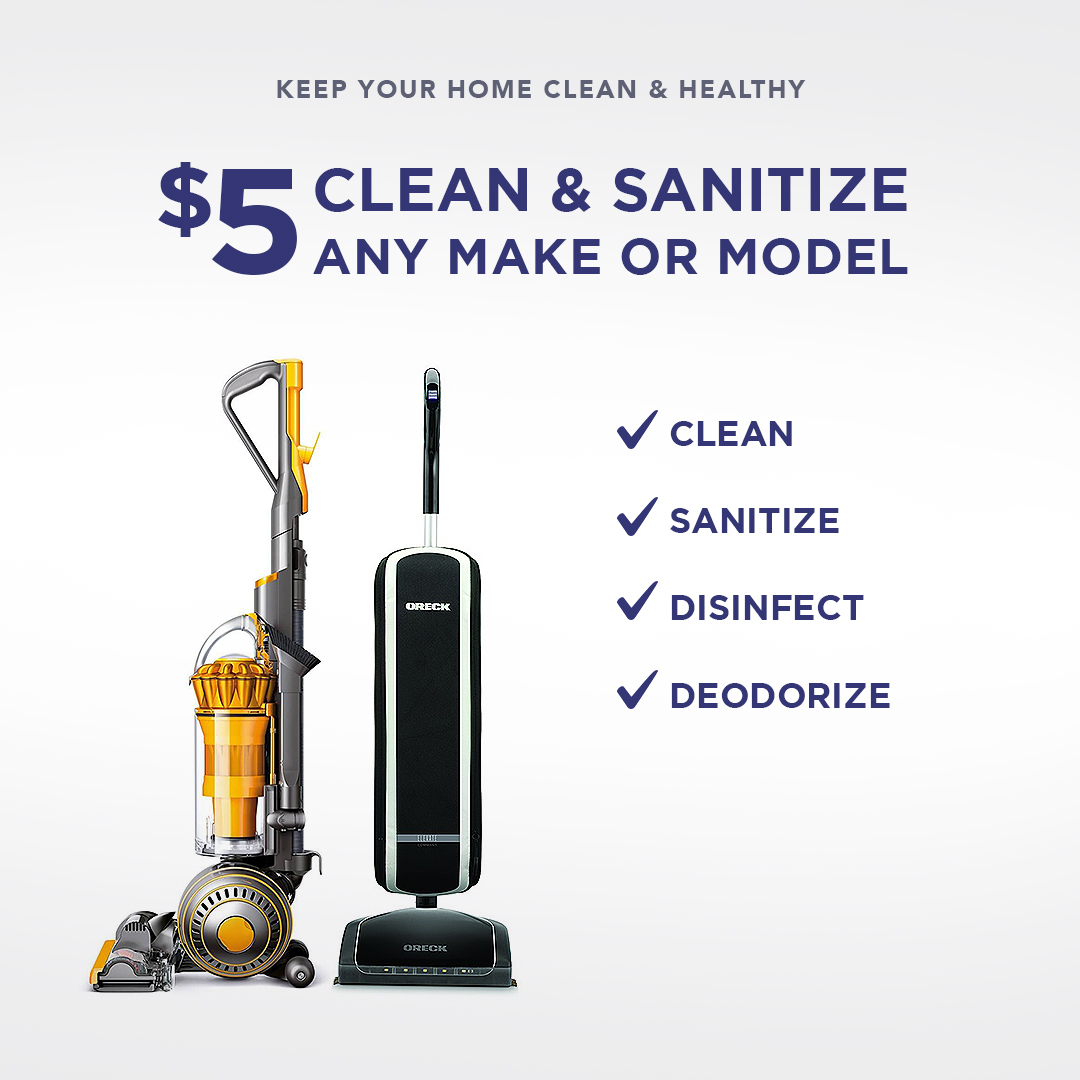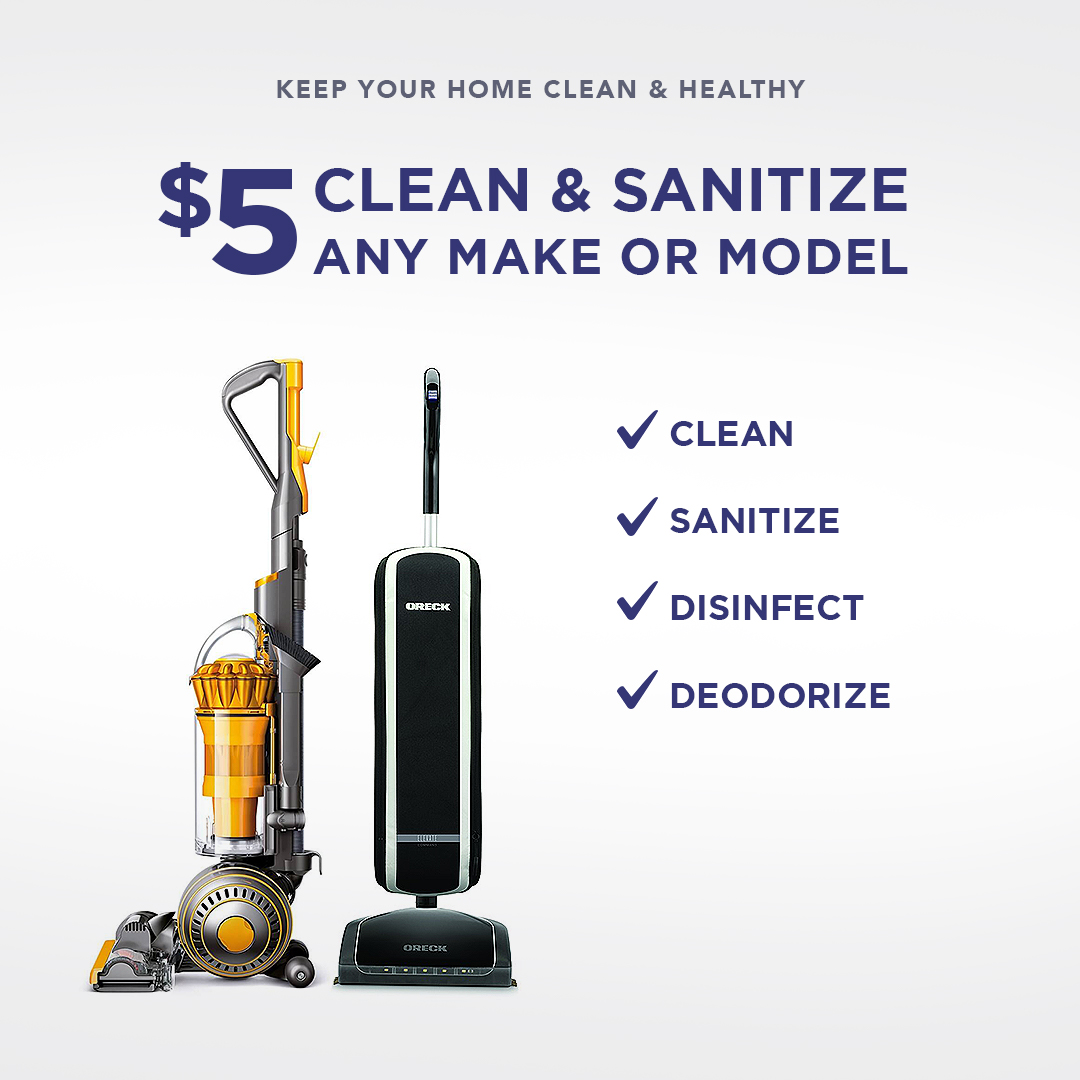Vacuum cleaners are essential tools for keeping our homes clean and tidy. However, with regular use, they can accumulate dirt, dust, and bacteria that can contaminate the air and surfaces in your home. That’s why it’s crucial to clean and sanitize your vacuum cleaner regularly. In this article, we will share some tips and tricks on how to clean and sanitize your vacuum cleaner effectively, ensuring it works efficiently and keeps your home healthy and safe.
Cleaning and sanitizing your vacuum cleaner is a simple process that only takes a few minutes of your time. By following the steps we’ll outline in this article, you’ll be able to maintain your vacuum cleaner’s performance, prolong its lifespan, and ensure that your home is free from any harmful contaminants. So, let’s get started and learn how to clean and sanitize your vacuum cleaner like a pro!
To clean and sanitize your vacuum cleaner, first, unplug it from the power source. Remove the dustbin or bag and empty it into a trash can. Wash the dustbin or bag with soap and water, then let it dry completely. Clean the filters by washing them with water or replacing them if they are disposable. Finally, use a disinfectant spray to sanitize the vacuum’s surface, handle, and attachments. Allow everything to dry completely before reassembling the vacuum cleaner.

How to Clean and Sanitize Your Vacuum Cleaner
Why Cleaning and Sanitizing Your Vacuum Cleaner is Important
Keeping your home clean and hygienic is essential for the health and well-being of your family. Your vacuum cleaner is an essential tool for cleaning your home, but it can also harbor dirt, dust, and bacteria. Regularly cleaning and sanitizing your vacuum cleaner is important to ensure that it continues to work effectively and to prevent the spread of germs in your home.
Over time, your vacuum cleaner can accumulate dust, hair, and other debris, which can clog the filters and reduce the suction power. This can make it less efficient at picking up dirt and dust, which means that you may have to vacuum more often to keep your home clean. In addition, if you have pets, their hair and dander can get trapped in the vacuum cleaner, which can lead to unpleasant odors and contribute to allergies and asthma.
How to Clean Your Vacuum Cleaner
The first step in cleaning your vacuum cleaner is to unplug it from the power source. Next, remove the dustbin or bag and empty it into a trash can. Use a soft-bristled brush to remove any dust or debris from the filters and the dustbin or bag. If your vacuum cleaner has washable filters, rinse them under running water and allow them to air-dry completely before replacing them.
To clean the brush roll, use a pair of scissors to cut any hair or strings that are wrapped around it. Once the brush roll is free of debris, use a damp cloth to wipe it down. You can also clean the attachments and hoses with a damp cloth or by running them under water. Be sure to dry them thoroughly before using them again.
How to Sanitize Your Vacuum Cleaner
To sanitize your vacuum cleaner, you can use a disinfectant spray or wipes. Spray or wipe down the exterior of the vacuum cleaner, including the handle and the base. You can also use a disinfectant spray or wipes on the attachments and hoses. Be sure to follow the instructions on the disinfectant spray or wipes to ensure that they are effective.
If you want to use a natural disinfectant, you can mix equal parts of water and white vinegar in a spray bottle. Spray the solution onto the exterior of the vacuum cleaner, attachments, and hoses, and then wipe them down with a clean cloth. Vinegar is a natural disinfectant that can kill bacteria and viruses.
Benefits of Cleaning and Sanitizing Your Vacuum Cleaner
Regularly cleaning and sanitizing your vacuum cleaner can provide several benefits, including:
- Improved suction power for better cleaning
- Reduced risk of allergies and asthma from pet dander and dust
- Elimination of unpleasant odors from pet hair and dust
- Increased lifespan of the vacuum cleaner
- Improved indoor air quality
Vs. Buying a New Vacuum Cleaner
If your vacuum cleaner is old or no longer working effectively, you may be considering purchasing a new one. However, before you make that investment, consider cleaning and sanitizing your existing vacuum cleaner. This can often restore it to its original performance and save you money in the process. In addition, by regularly cleaning and sanitizing your vacuum cleaner, you can extend its lifespan and avoid the need for frequent replacements.
Conclusion
Regularly cleaning and sanitizing your vacuum cleaner is an essential part of maintaining a clean and healthy home. By following the steps outlined above, you can ensure that your vacuum cleaner continues to work effectively and efficiently, while also reducing the risk of allergies and asthma from pet dander and dust. So take the time to clean and sanitize your vacuum cleaner today!
Frequently Asked Questions
Keeping your vacuum cleaner clean and sanitized is essential for maintaining a healthy and hygienic home environment. Here are some frequently asked questions and answers about how to clean and sanitize your vacuum cleaner.
What are the steps to clean a vacuum cleaner?
The first step in cleaning a vacuum cleaner is to unplug it from the power source. Remove the dust bin or bag and empty it into a garbage bag. Check the filter and clean or replace it as needed. Use a soft-bristled brush to clean the brush roll and remove any hair or debris. Clean the hose and attachments with warm soapy water and dry thoroughly. Wipe down the exterior of the vacuum cleaner with a damp cloth and allow it to dry completely before using it again.
It is important to clean your vacuum cleaner regularly to keep it running efficiently and to prevent the spread of dirt and bacteria in your home. Aim to clean your vacuum cleaner at least once a month or more frequently if it is heavily used.
How can I sanitize my vacuum cleaner?
To sanitize your vacuum cleaner, you can use a disinfectant spray or wipe to clean the exterior of the vacuum cleaner. You can also use a mixture of water and white vinegar to clean the dustbin or bag, hose, and attachments. This will help to kill bacteria and neutralize odors. Another option is to use a steam cleaner to sanitize your vacuum cleaner. Simply run the steam cleaner over the exterior and interior of the vacuum cleaner and allow it to dry completely before using it again.
Sanitizing your vacuum cleaner regularly will help to keep your home free from harmful bacteria and germs, especially if you have pets or children who are prone to picking up germs and dirt from the floor.
How often should I replace the filter in my vacuum cleaner?
The frequency with which you need to replace the filter in your vacuum cleaner will depend on the type of filter and how often you use your vacuum cleaner. Some filters can be washed and reused, while others need to be replaced every few months. Check the manufacturer’s instructions for your vacuum cleaner to determine how often to replace the filter. As a general rule, aim to replace the filter at least once a year to keep your vacuum cleaner running efficiently.
If you notice that your vacuum cleaner is not picking up dirt and debris as well as it used to, this may be a sign that the filter needs to be cleaned or replaced.
What is the best way to clean the brush roll on my vacuum cleaner?
To clean the brush roll on your vacuum cleaner, start by unplugging the vacuum cleaner and removing the brush roll from the vacuum cleaner. Use a pair of scissors or a seam ripper to cut away any hair or thread wrapped around the brush roll. Use a soft-bristled brush to remove any remaining debris. If the brush roll is particularly dirty, you can soak it in warm soapy water for a few minutes before cleaning it with a brush. Rinse the brush roll with clean water and allow it to dry completely before reattaching it to the vacuum cleaner.
Cleaning the brush roll regularly will help to prevent clogging and prolong the life of your vacuum cleaner.
Can I use bleach to clean my vacuum cleaner?
No, it is not recommended to use bleach to clean your vacuum cleaner as it can damage the plastic and rubber components of the vacuum cleaner. Instead, use warm soapy water or a mixture of water and white vinegar to clean the dustbin or bag, hose, and attachments. Wipe down the exterior of the vacuum cleaner with a damp cloth and allow it to dry completely before using it again.
If you want to sanitize your vacuum cleaner, use a disinfectant spray or wipe, or a steam cleaner, as mentioned earlier.
How To Clean A Vacuum Cleaner | 5 Simple Steps
In conclusion, cleaning and sanitizing your vacuum cleaner is an essential task that should not be overlooked. Not only will it improve the performance of your machine, but it will also promote a healthy living environment for you and your family. Remember to follow the manufacturer’s instructions and use the right cleaning tools and products to avoid damaging your vacuum cleaner.
Regular maintenance is key to ensuring that your vacuum cleaner remains in good shape for years to come. You should clean the dustbin, filters, and brush roll after every use to prevent the buildup of dirt and debris. Additionally, deep cleaning your vacuum cleaner every few months will help eliminate any bacteria or germs that may have accumulated inside.
In conclusion, taking care of your vacuum cleaner is a simple and easy task that can have a significant impact on your home’s cleanliness and your family’s health. By following the cleaning and sanitizing tips outlined in this article, you can ensure that your vacuum cleaner remains in top condition and continues to serve you well for a long time.

